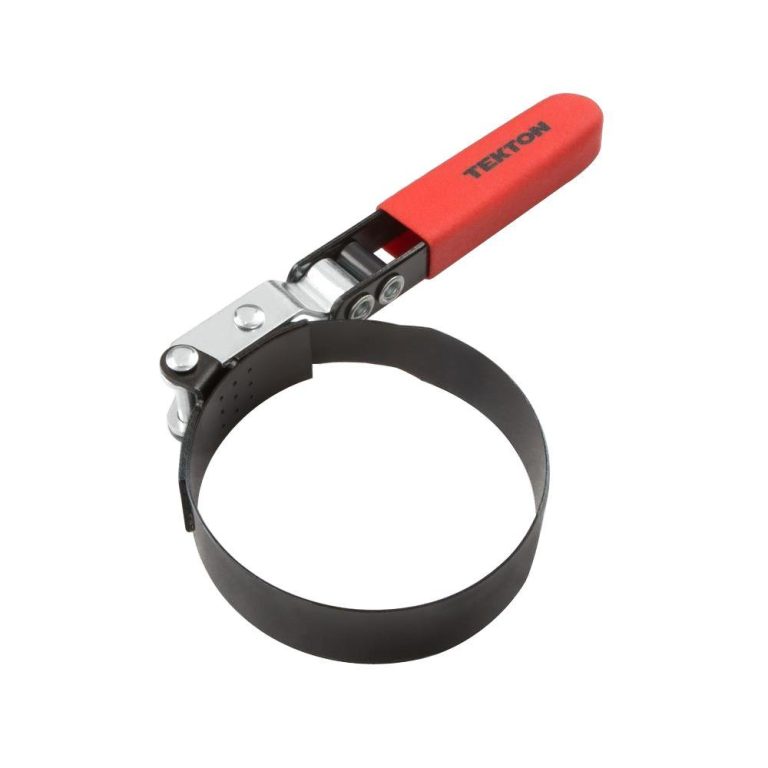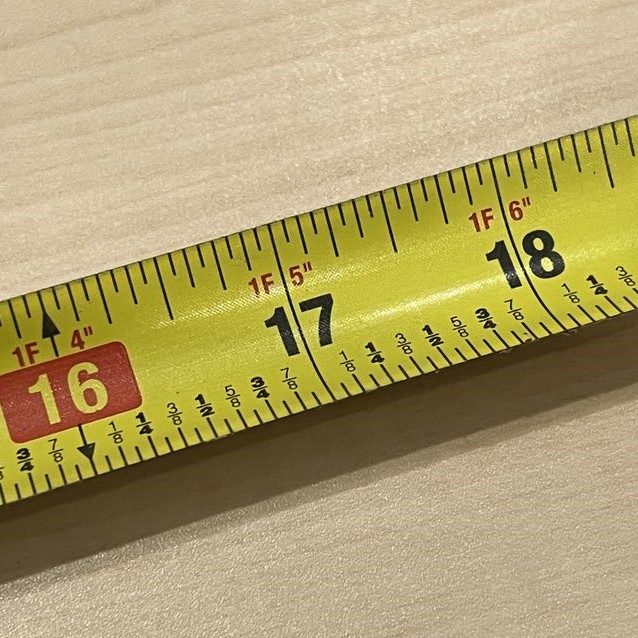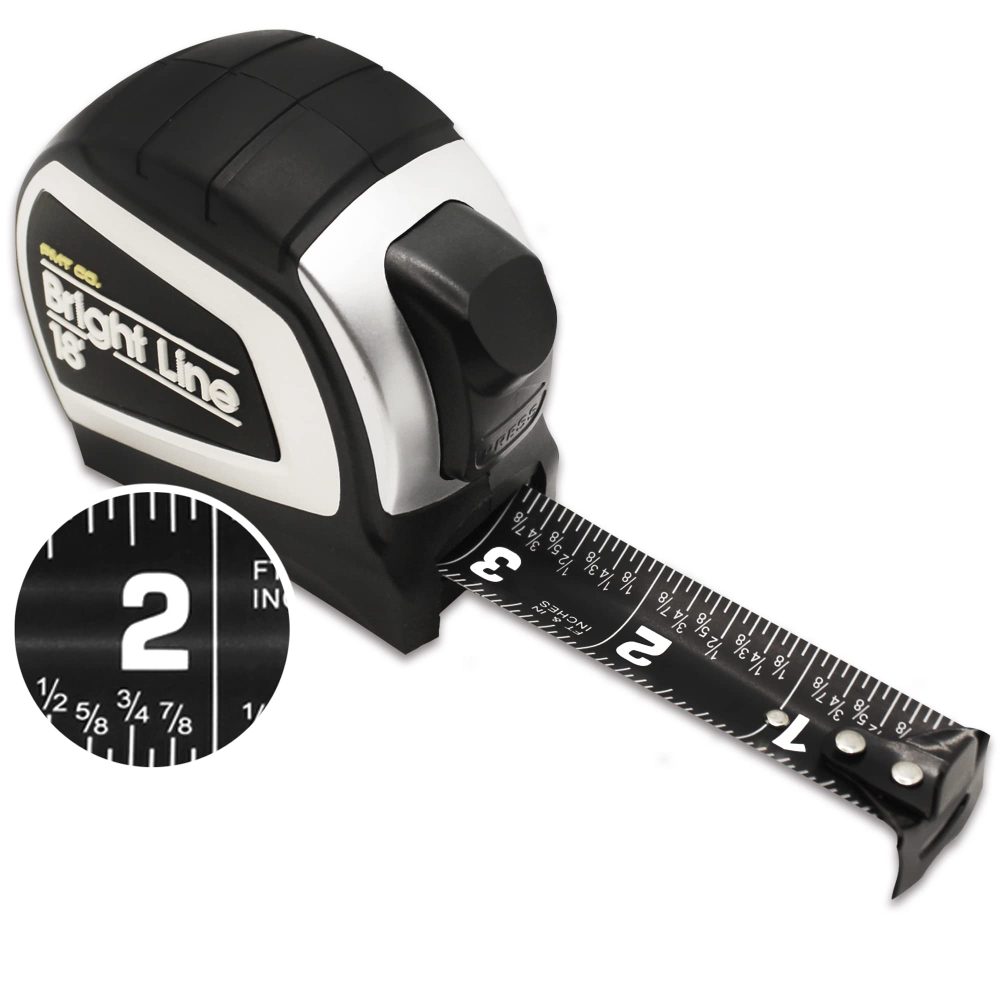
Tape Measure Fractions: A Guide to Accurate Measurements
Accurate measurements are the cornerstone of any successful project, whether you’re a seasoned carpenter, a DIY enthusiast, or simply tackling household tasks. One essential tool that ensures precision is the tape measure, especially those featuring tape measure fractions. Understanding how to effectively use tape measure fractions can significantly enhance the accuracy of your measurements, leading to better results and fewer mistakes. In this guide, we will delve deep into the world of tape measure fractions, exploring their features, benefits, and practical applications to help you achieve precision in every project.
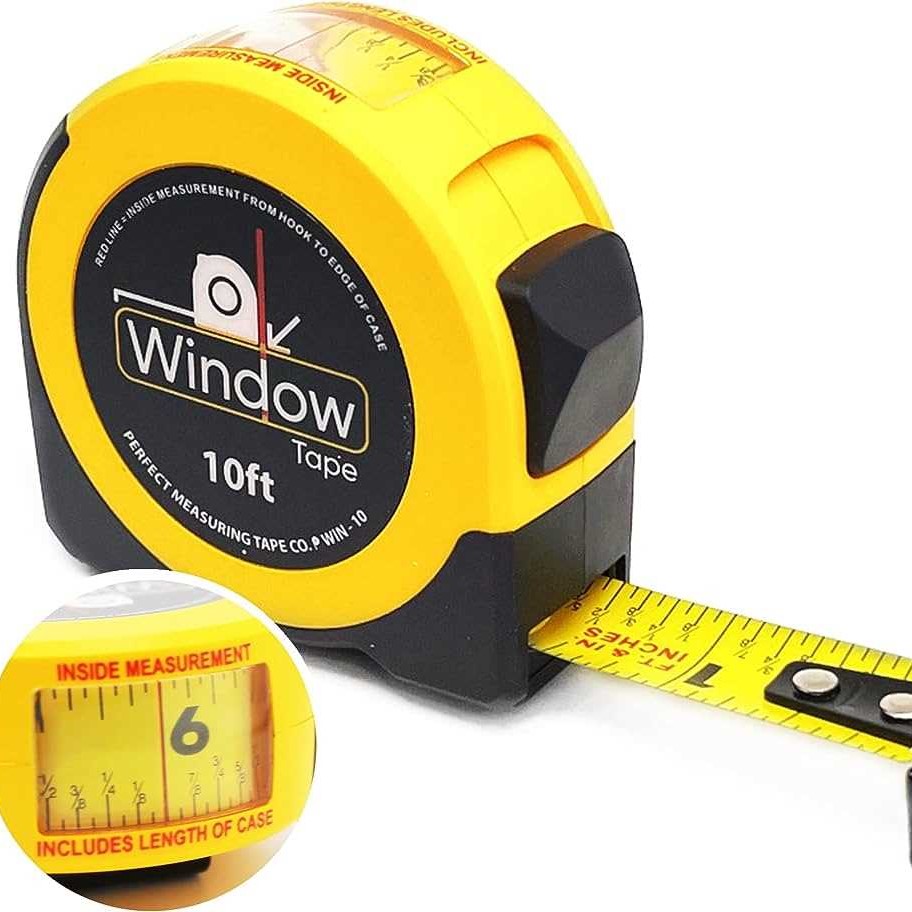 How to Read Tape Measure Fractions
How to Read Tape Measure Fractions
Identifying the Inch Markings
Reading tape measure fractions effectively begins with a clear understanding of inch markings. Each inch on the tape is typically divided into smaller fractions, which are denoted by lines of varying lengths and thicknesses. For example, the longest line usually represents a whole inch, followed by shorter lines for halves, quarters, eighths, and sixteenths of an inch. By familiarizing yourself with these patterns, you can quickly and accurately interpret the tape measure to obtain precise measurements.
Understanding Fractional Divisions
Once you’ve identified the inch markings, the next step is to understand the fractional divisions. Each fractional division corresponds to a specific portion of an inch:
- 1/2 Inch: Represented by a longer line, usually the second longest after the whole inch.
- 1/4 Inch: Marked by a slightly shorter line than the half-inch.
- 1/8 Inch: Denoted by shorter lines than the quarter-inch marks.
- 1/16 Inch: Indicated by the shortest lines on the tape.
By recognizing these distinctions, you can accurately measure and translate them into numerical values. For instance, if the tape measure shows a mark halfway between two inch lines, it signifies a half-inch measurement. Similarly, a mark one-quarter of the way between two inches represents a quarter-inch increment.
Practical Tips for Accurate Reading
To ensure accurate reading of tape measure fractions, consider the following tips:
- Positioning: Hold the tape measure level against the surface being measured to avoid parallax errors.
- Focus: Keep your eye directly over the measurement point to clearly see the fractional markings.
- Marking: Use a pencil or marker to highlight the exact measurement point, ensuring precision.
- Practice: Regularly using your tape measure with fractions will enhance your ability to quickly and accurately interpret the markings.
By incorporating these practices into your measurement routine, you can significantly improve the accuracy and reliability of your measurements.
Practical Applications
Carpentry and Woodworking
In carpentry and woodworking, precision is vital for creating structures that fit together seamlessly. Tape measure fractions allow carpenters to make fine adjustments, ensuring that each piece of wood is cut to the exact length required. Whether measuring for joints, angles, or intricate designs, the ability to measure fractions of an inch can make the difference between a flawless project and one that requires additional tweaking.
Construction and Building Projects
For construction projects, accurate measurements are essential to ensure the stability and safety of structures. Builders rely on tape measure fractions to measure materials like lumber, drywall, and insulation with high precision. This accuracy helps prevent construction errors, reduces material waste, and ensures that all components fit together as intended, ultimately contributing to the overall integrity of the building.
DIY and Home Improvement
In DIY and home improvement projects, tape measure fractions are equally important. From hanging pictures to installing shelves, precise measurements ensure that installations are level and properly aligned. Whether you’re working on a small project or a large-scale renovation, understanding measure tape fractions can help you achieve professional-quality results without the need for costly mistakes or rework.
Sewing and Tailoring
Even in creative fields like sewing and tailoring, precision measurements are crucial. Fabric must be measured accurately to ensure that garments fit perfectly and patterns align correctly. Tape measures with fractions provide the necessary detail to capture these precise measurements, allowing for meticulous craftsmanship and high-quality finished products.
 Choosing the Right Tape Measure with Fractions
Choosing the Right Tape Measure with Fractions
Selecting the Appropriate Length
When selecting a tape measure with fractions, one of the first considerations is the appropriate length for your needs. Tape measures come in various lengths, typically ranging from 12 feet to 100 feet. For most DIY and home improvement projects, a 25-foot or 30-foot tape measure is sufficient. However, for larger construction projects, longer tape measures may be necessary to accommodate extended measurements without the need for multiple measurements or extensions.
Material and Build Quality
The material and build quality of a tape measure with fractions play a significant role in its durability and functionality. High-quality tape measures are usually made from steel or reinforced fiberglass, providing flexibility and resistance to twisting or kinking. Additionally, the casing should be sturdy enough to withstand impacts and harsh working conditions. Investing in a tape measure with strong build quality ensures that it remains reliable and accurate over time, even with frequent use.
Ease of Use and Additional Features
Beyond basic measurements, many tape measures with fractions come equipped with additional features that enhance usability. Features such as lockable blades, magnetic tips, and belt clips can improve functionality and convenience. Lockable blades allow users to hold measurements steady without manually holding the tape, while magnetic tips enable easy attachment to metal surfaces. Belt clips provide quick access and secure carrying during projects. These features contribute to a more efficient and user-friendly experience, making the tape measure a versatile tool for various tasks.
Price and Brand Reputation
Price and brand reputation are also important factors to consider when choosing a tape measure with fractions. While it might be tempting to opt for the cheapest option available, investing in a reputable brand ensures better quality, accuracy, and durability. Trusted brands often offer warranties and better customer support, providing peace of mind and assurance that your tape measure will perform reliably when you need it most. Balancing cost with quality and brand reliability is key to selecting a tape measure that meets your requirements.
Measuring Techniques
Aligning the Start Point
Proper alignment of the start point is essential for accurate measurements using measure tape fractions. To begin, ensure that the tape measure’s end hook is firmly anchored against the edge of the object being measured. Most tape measures feature a small metal hook at the end, which should be pressed flush against the starting edge to eliminate gaps or overlaps that could lead to inaccuracies. This alignment ensures that the measurement begins precisely where intended, providing a reliable reference point for fractional increments.
Counting Fractional Markings
Once the start point is aligned, the next step is to accurately count the fractional markings along the tape measure. For example, if you need to measure 2 and 3/4 inches, first identify the 2-inch mark, then count three of the quarter-inch increments beyond it. It’s important to visually confirm each fractional division to ensure that the measurement is precise. By systematically tracking each fractional increment, you can achieve highly accurate measurements, reducing the likelihood of errors in your projects.
Double-Checking Measurements
To guarantee the utmost accuracy, it’s advisable to double-check your measurements after initially recording them. This practice involves re-measuring the same distance and comparing the results to ensure consistency. Double-checking helps identify any potential errors that may have occurred during the initial measurement, such as misreading a fractional mark or incorrect alignment of the tape measure. By consistently verifying your measurements, you can uphold a high standard of precision throughout your projects.
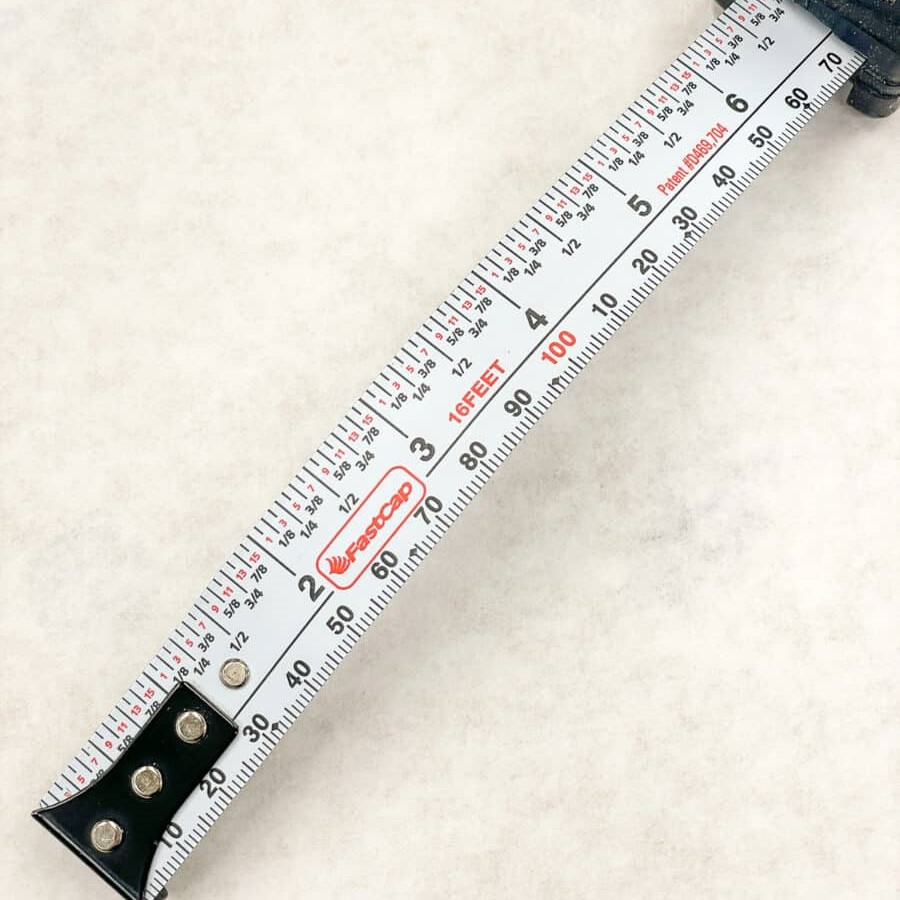 How to Add Tape Measure Fractions
How to Add Tape Measure Fractions
Understanding the Basics of Fraction Addition
Adding measure tape fractions is a fundamental skill that enhances measurement accuracy, especially when dealing with complex or multiple dimensions. Understanding the basics of fraction addition is essential to perform this task effectively. The key principle is to ensure that the denominators of the fractions are the same before adding them together. This common denominator allows for the straightforward summation of the fractional parts, making the process seamless and less prone to errors.
Step-by-Step Guide to Adding Fractions on a Tape Measure
To add tape measure fractions accurately, follow these steps:
- Identify the Whole Inches: Start by noting the whole inch marks on the tape measure.
- Compare Denominators: Ensure that the fractions you are adding share the same denominator (e.g., 1/4 and 1/4).
- Add the Numerators: Once the denominators are the same, add the numerators together (e.g., 1/4 + 1/4 = 2/4).
- Simplify the Fraction: If possible, simplify the resulting fraction (e.g., 2/4 simplifies to 1/2).
- Combine the Whole Inches and Fractions: Add the whole inch values to the simplified fraction to get the final measurement (e.g., 3 inches + 1/2 inch = 3 1/2 inches).
Practical Examples of Fraction Addition
Consider a scenario where you need to measure a board that spans 2 3/8 inches and another that spans 1 1/4 inches. To find the total length, follow these steps:
- Whole Inches: 2 inches + 1 inch = 3 inches
- Fractions: 3/8 + 1/4 (convert 1/4 to 2/8 for a common denominator) = 3/8 + 2/8 = 5/8
- Combine: 3 inches + 5/8 inches = 3 5/8 inches
This example illustrates how understanding and applying fraction addition can lead to accurate and efficient measurements.
Common Mistakes to Avoid
When adding tape measure fractions, it’s important to avoid common mistakes that can compromise accuracy:
- Ignoring Denominators: Failing to ensure that the fractions have the same denominator can lead to incorrect summations.
- Miscounting Marks: Losing track of fractional increments when counting can result in errors.
- Overlooking Simplification: Not simplifying fractions can make the final measurement more complex and harder to interpret.
- Neglecting Double-Checking: Skipping the step of verifying calculations can allow mistakes to go unnoticed.
By being mindful of these potential pitfalls, you can maintain high precision in your measurements and avoid unnecessary setbacks in your projects.
Troubleshooting Common Issues
Misalignment of the Tape
One common issue when using tape measure fractions is the misalignment of the tape, which can lead to inaccurate measurements. To troubleshoot this, ensure that the tape measure is firmly anchored at the start point and that the tape lies flat against the surface being measured. Avoid bending or twisting the tape, as this can distort the fractional markings. If misalignment persists, inspect the tape measure for damage or defects that may be causing the issue and consider replacing it if necessary.
Faded or Worn Fractional Marks
Over time, the fractional markings on a tape measure can fade or wear down, making them difficult to read. If you encounter faded or worn marks, there are a few solutions. First, you can use a fine tip permanent marker to redraw the worn lines, ensuring they are clear and visible. Alternatively, consider using a magnifying glass or additional lighting to enhance visibility when reading the tape measure. If the markings are severely damaged, it may be time to invest in a new tape measure with clear, well-defined fractions.
Inconsistent Tape Retracting
Inconsistent retraction of the tape measure can affect the accuracy of your measurements. This issue may result from a faulty locking mechanism or internal damage to the tape measure. To address this, check the locking mechanism to ensure it is functioning correctly and not sticking or failing to engage properly. If the retraction remains inconsistent despite troubleshooting these components, it may be necessary to replace the tape measure to maintain measurement accuracy.
Difficulty Reading Small Fractions
Reading small fractions, such as sixteenths of an inch, can be challenging, especially in low-light conditions or with poor visibility. To overcome this, use additional lighting to illuminate the tape measure clearly, making the fractional markings easier to see. Additionally, you can pause and take a closer look at the measurement point to ensure that you are accurately reading the small fractions. Practicing regularly with smaller fractions will also improve your proficiency and confidence in interpreting these detailed measurements.
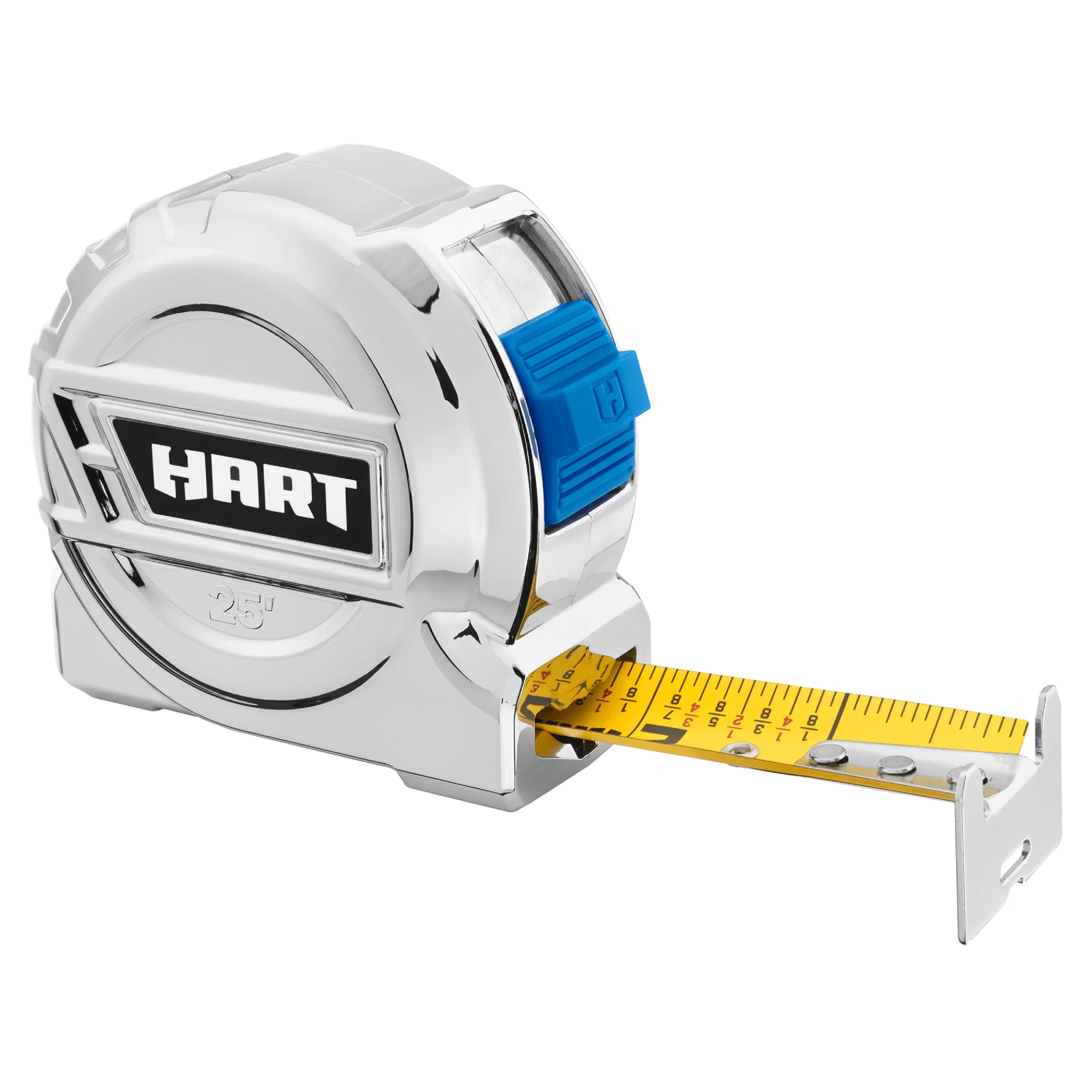 Frequently Asked Questions
Frequently Asked Questions
How Do I Choose the Right Fractional Tape Measure for My Project?
When selecting a fractional tape measure, consider the length, durability, and specific fractional markings that match your project’s requirements. A 25-foot or 30-foot tape measure is suitable for most woodworking and DIY projects, while longer measures may be necessary for construction tasks. Ensure the tape measure has clear, durable fractional markings and features that enhance ease of use, such as lockable blades and ergonomic grips. Additionally, choose a reputable brand known for quality and reliability.
Can I Use a Tape Measure with Fractions for Metric Measurements?
While tape measures with fractions are designed primarily for imperial measurements, many models also include metric markings on the opposite side of the tape. This dual functionality allows you to switch between fractional and metric measurements as needed. To use the tape measure for metric measurements, simply refer to the metric markings while extending the tape as you normally would. This versatility makes fractional tape measures suitable for a wide range of projects that may require both measurement systems.
What Are the Benefits of Using a Tape Measure with Fractions Over a Digital Measure?
Tape measures with fractions offer several advantages over digital measures, including:
- Reliability: Tape measures do not rely on batteries or electronics, ensuring they are always ready for use.
- Simplicity: The straightforward design of tape measures makes them easy to use without the need for additional steps or settings.
- Durability: High-quality tape measures are built to withstand rough conditions, while digital measures may be more susceptible to damage from drops or exposure to moisture.
- Accuracy: For many practical purposes, fractional tape measures provide sufficient accuracy without the potential rounding errors that can occur with digital readings.
However, digital measures can offer additional features such as automatic conversion between measurement systems and enhanced precision, which may be beneficial for specific applications.
 Conclusion
Conclusion
In conclusion, mastering tape measure fractions is an invaluable skill for achieving precision and excellence in a wide array of projects. From carpentry and construction to intricate DIY tasks and creative endeavors, the ability to measure accurately using tape measure fractions significantly enhances the quality of your work. By understanding the features, employing effective measuring techniques, and maintaining your tape measure with care, you can ensure that each measurement contributes to the success of your project. Embrace the precision that tape measure fractions offer, and elevate your craftsmanship to new heights of accuracy and professionalism.
